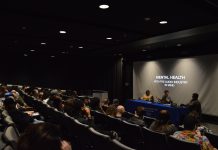
In five years, locals and St. Louis visitors will have the opportunity to experience a real-life safari without leaving the city at the new Saint Louis Zoo WildCare Park.
The Saint Louis Zoo has begun the process of installing a $230 million, 425-acre zoo expansion in Spanish Lake, located in North St. Louis County. Animals will begin arriving in 2023 with a target public opening in 2027.
Funding for the expansion comes from multiple sources, including philanthropy, external finances and cash reserves from both the zoo and the Saint Louis Zoo Association. and zoo and Saint Louis Zoo Association cash reserves. Admission for St. Louis County residents will be free, per 2018 Proposition Z, and the zoo plans to share details of costs for non-residents at a later date.
This expansion – WildCare Park – will offer safari, observational and virtual reality experiences designed to connect visitors with nature through immersion.
“At WildCare Park, guests will be immersed in nature and animal pastures, providing unique experiences with every visit,” Dr. Jo-Elle Mogerman, WildCare Park director, said. “Every visit will be a new adventure.”
Two 30-minute guided safaris – woodland and savanna – allow guests to get a glimpse of a day in the life of over 100 animals, including the star of the woodland safari: the white rhinoceros. Visitors can also enjoy a walking safari through a multiple-acre habitat surrounded by animals, or they can explore the nature adventure area. Indoors, the “zooseum” offers an interactive virtual and augmented nature experience.
For added fees, guests can access off-road and behind-the-scenes premium safaris, climb the 11-story safari observation tower and feed giraffes. The campus also features a restaurant with indoor and outdoor seating, luxury cabins and an event center with two ballrooms.
In addition to hosting myriad guest experiences, WildCare Park will also house the Kent Family Conservation and Animal Science Center, a 61-acre reserve that numerous endangered species will soon call home.
“With the Kent Family Conservation and Animal Science Center, we are striving to support species recovery programs and population sustainability,” Martha Fischer, general curator at WildCare Park, said. “This is where conservationists will work to sustain populations of endangered species, conduct research and engage in applied conservation programs. It is key to the zoo’s work to advance wildlife conservation efforts.”

The conservation center at WildCare Park will have at least six endangered species living in large single-species pastures. The first animals expected to live there are the Grevy’s zebra, addax, bongo, Przewalski’s horse, roan antelope and Somali wild ass, distributed among five barns and up to 12 interconnected pastures.
Currently, conservationists are studying species in and around WildCare Park to better plan property development, spanning across eight areas of study: bats, birds, coyotes/foxes, invertebrates/pollinators, plants, reptiles, amphibians and water quality.
As of July 2022, demolitions of the expansion’s 425-acre lot have nearly completed, and fencing the property has begun and is expected to continue throughout the first few months of 2023. Designing and constructing a massive, sustainable campus has been challenging.
“There are a lot of complexities associated with building a large zoological park like this. The enormity and importance – size and scope – are incredible,” Mogerman said. “Understandably, the COVID-19 pandemic and supply chain issues – including long lead times of up to one year for key materials like steel, wood and fencing – have slowed down many aspects of the process; however, we still were able to continue with our planning, as well as our biodiversity studies. We want to do this right so that it’s sustainable for generations to come.”
To find out more about WildCare Park, visit stlzoo.org/about/wildcare-park.
Share this post
Molly Foust (she/her) spring 2023 Editor-In-Chief.




